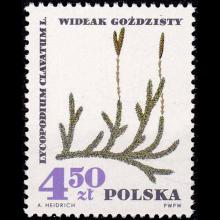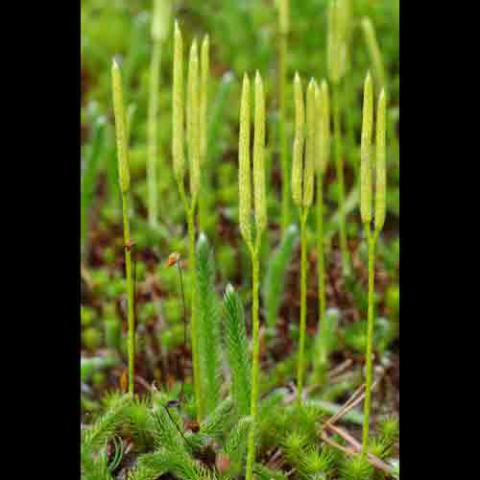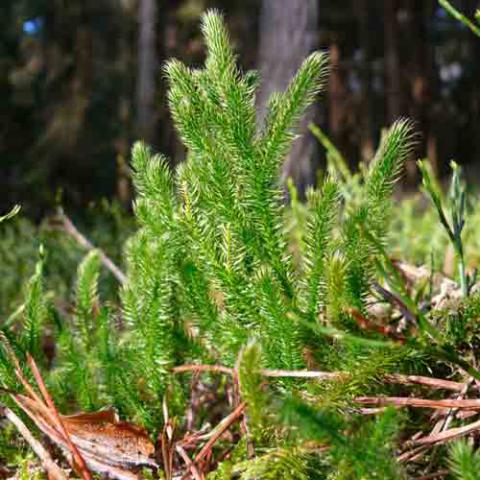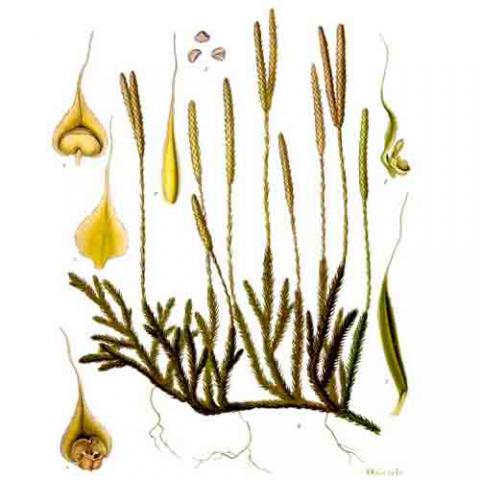NAME(S)
TAXONOMY
PLANTAE ID
THERAPEUTIC
Poland
Issued:
Stamp:
Lycopodium clavatum
Poland
Issued:
Stamp:
Lycopodium clavatum
Poland
Issued:
Stamp:
Lycopodium clavatum
Experiments with Lycopodium
By T. O'Conor Sloane, June 19, 1886
Lycopodium is a fine powder, the seed, or more correctly the spores, of a club moss. These are members of a curious family of cryptogamous plants that, from the demand in commerce for the spores, have a certain importance. They form the living representatives of a once numerous and important group of large trees, now mostly extinct – the lepidodendrons and sigillarias. In the carboniferous ages these plants grew to immense size, and it is supposed that in the moist air laden with carbonic acid gas their growth was extremely rapid. From them and their associates the beds of coal that we now burn, anthracite, bituminous, and cannel, were formed.
Today this mighty series has dwindled into insignificance, the survivors being little more than herbaceous in habit. Long strings of some of its varieties are sold for Christmas decorations, the stems being tied together. The spore cases are comparatively large vessels.
Exactly how the germination takes place is unknown. Each spore case contains a quantity of the spores— microscopic bodies that, collected, form the finest conceivable powder, of a yellowish brown color. So fine and smooth are the spores, that a bottle half full acts almost as if filled with water. The lycopodium, when the bottle is inclined and slightly jarred or shaken rapidly, slides down to a level, or nearly level, surface, and, on more active agitation, a species of waves or ripples- Can be produced on the surface. On microscopic examination, each grain is found to approximate to a spherical shape, with three faces meeting pyramidally on one part of its superficies.
Several very interesting experiments can be performed with this substance. For a long time past it has been used in theaters for the production of flashes of light. Owing to its fine state of division and its resinous nature, it catches fire with great readiness when disseminated in the air, and produces much the same effect that a sudden inflammation of a large body of gas would exhibit. Its fineness is such that, practically speaking, it assimilates itself to the gaseous state. If a small quantity is placed on a card and shaken out over a candle flame, bright, lightning-like flashes will appear. By proper management, absolutely explosive mixtures of lycopodium and air can be produced. In these respects it reminds us of the dust of coal mines and flour mills, to which so many fatal explosions have been due.
By virtue, probably, of its resinous nature, it is moistened by water only with considerable difficulty. Spread over the surface of water, it forms a coating that does not for many hours become wet, and that prevents other bodies from coming in contact with the fluid. It does this, not by acting as a membrane, but by subdividing the surface of the water so as to magnify the effects of surface tension. It also seems in a certain sense to increase the coherency of the surface, and to make it tend to move all at once, if an effort is made to disturb it. Having sprinkled some over the surface of water in a glass, the experimenter may immerse his finger in the fluid. He will notice no difference in the sensation, the water feels cold as ever, but will observe that as his finger descends it carries with it the coating of lycopodium, that now, like a membrane, wraps itself around his finger, and adheres to it under the water. The effect produced is sometimes quite peculiar, the finger appearing enveloped in ice, and magnified by the shape of the glass. On withdrawing it, however, it will be found perfectly dry. The adhering powder can be shaken off on the surface of the water. As long as enough powder is kept upon the surface of the water, the immersion can be repeated over and over again. The finger will never become wet. The lycopodium divides the water into such small areas that, in virtue of its surface tension, it is held back and away from the skin. If all the dust is drawn down, and the water comes in contact with the unprotected finger, it will become wet above the lycopodium.
One curious illustration of the efficacy of the powder in preventing contact between a solid and liquid may be obtained by lowering a coin into the water. The coin may rest upon a bent wire or be lowered by a thread. The coating of lycopodium will close over and envelop it as it descends, and it can be lowered down to the bottom of the vessel and again exited perfectly dry. It is just as if it were inclosed in a sac of India rubber. From a vessel of clean water, drops may be taken and allowed to fall gently on a somewhat thickly coated surface of water. They immediately form into spheroids, not coming in contact with the water below. They can be rolled about and against each other without coalescing or sinking, as, curiously enough, there is a species of adherence that obtains between the lycopodium and the water, so that the drops become coated with it. If a piece of glass is dusted over and a drop placed on it, the rapidity with which the drop rolls about, as the glass plate is inclined, is quite striking. In a lantern this may be shown with good effect, the projected image of the drop flying across the field of view like a pistol ball.
The experiment of the floating needles may be repeated on a lycopodium-coated surface with magnified effect. Pieces of wire of some thickness, steel pens, and the like, float upon the surface, just as they do on mercury. Here again it may be noticed that the actual. depression is quite small. The surface is but slightly affected by the weight resting on it. The coated surface forms an admirable field for the display of magnetic figures. A tray of paper may be used to contain the water. It must be made waterproof by treatment with shellac or melted paraffin. The paraffin from a candle melted over the surface by the heat of an oven, or by being held in front of a fire, will suffice. A shallow layer of water is placed in it, and the tray rests upon the poles of a powerful magnet. It is dusted with lycopodium, the excess is blown off, and iron filings dropped on the surface from a considerable height. The filings may need a little assistance by jarring, but they will often, without it, arrange themselves in the magnetic curves. At the poles, where the attraction is strongest and where most filings accumulate, the magnet draws them down, depressing the surface quite curiously, but not with power enough, under ordinary conditions, to break through the film. It is a case of two forces being insufficient to overcome the surface strength. Here gravity and magnetism co-operate, but cannot break through.
Reference: Wikipedia
Genus species (Plantae): Lycopodium clavatum
Lycopodium clavatum is a spore-bearing vascular plant, growing mainly prostrate along the ground with stems up to 1 m (39 in) long; the stems are much branched, and densely clothed with small, spirally arranged leaves. The leaves are 3–5 mm long and 0.7–1 mm broad, tapered to a fine hair-like white point. The branches bearing spore cones turn erect, reaching 5–15 cm (2.0–5.9 in) above ground, and have fewer leaves than the horizontal branches. The spore cones are yellow-green, 2–3 cm (0.79–1.18 in) long, and 5 mm (0.20 in) broad. The horizontal stems produce roots at frequent intervals along their length, allowing the stem to grow indefinitely along the ground. The stems superficially resemble small seedlings of coniferous trees, though it is not related to these.
Although globally widespread, like many clubmosses, it is confined to undisturbed sites, disappearing from farmed areas and sites with regular burning. As a result, it is endangered in many areas. In the UK it is one of 101 species named as a high priority for conservation by the wild plant charity Plantlife.
Other common names
Common names for this species include common clubmoss, stag's-horn clubmoss, wolf-paw clubmoss, foxtail clubmoss, running clubmoss, running ground-pine, running pine, running moss, princess pine, and others.
Use
The spores of this moss, "lycopodium powder," are explosive if present in the air in high enough densities. They were used as flash powder in early photography and magic acts.
Active constituents
Bioactive secondary metabolites in clubmosses include triterpenoids with acetylcholinesterase inhibitor activity isolated from this species.
Reference: Plantas Medicinais de Kohler




